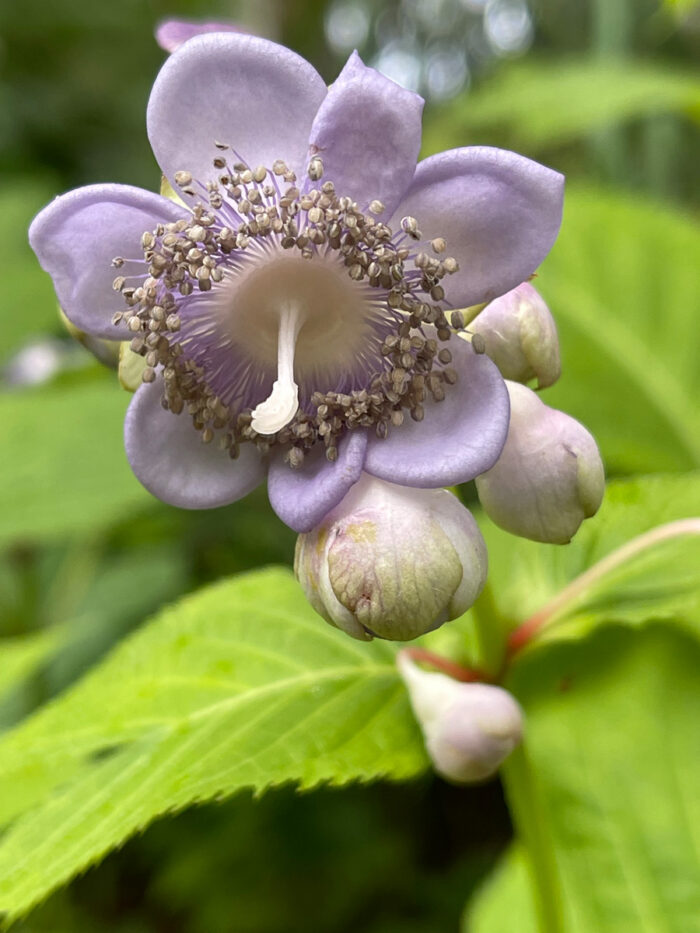
When we think “shade,” we typically think foliage. And when we do think of flowering perennials for shade, the same old ones come to mind, such as astilbe (Astilbe spp. and cvs., Zones 3–8) and bleeding hearts (Dicentra spp. and cvs., Zones 3–9). If you want to add a little more color and drama to your shade garden, however, considering turning to one of these lesser known but gorgeous flowering plants instead.
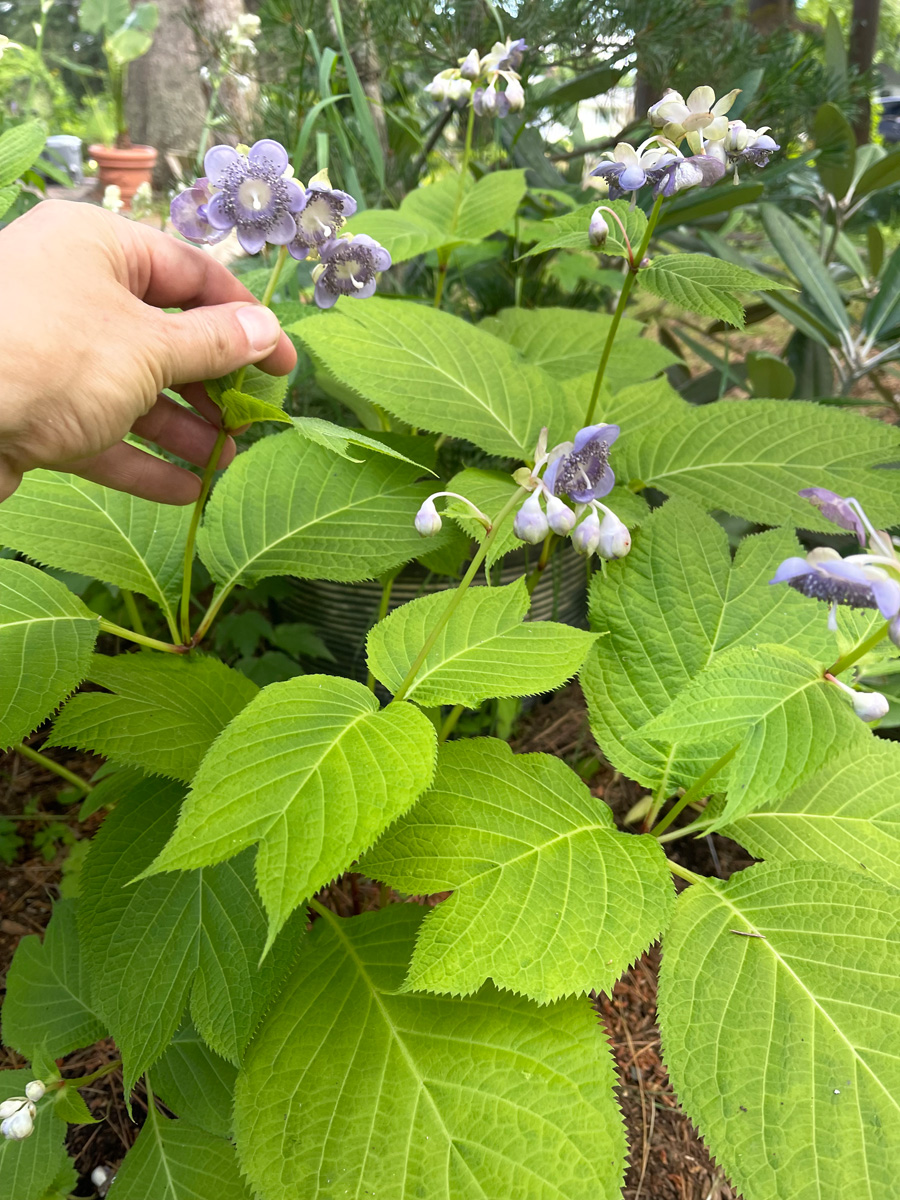
False hydrangea
Deinanthe caerulea, Zones 5–7
I’ll bet most anything that this uncommon and unusual woodlander will seem new to most gardeners, but the truth is that even though it was discovered in the 1800s, it has remained hard to find. Luckily this species is becoming more well-known, so it’s no longer all that difficult to source, particularly at small, specialty nurseries.
An ideal candidate for shade with gorgeous foliage and incredible lavender flowers that bloom in midsummer, this is one plant that everyone will stop and ask you about. False hydrangea is a perennial, not a shrub, despite its common name, and it dies back to the ground every autumn only to be refreshed with new stems, foliage, and flowers every summer.
False hydrangea will take partial to full shade and prefers well-draining but consistently moist soil. It grows about 1½ feet tall and up to 2½ feet wide.
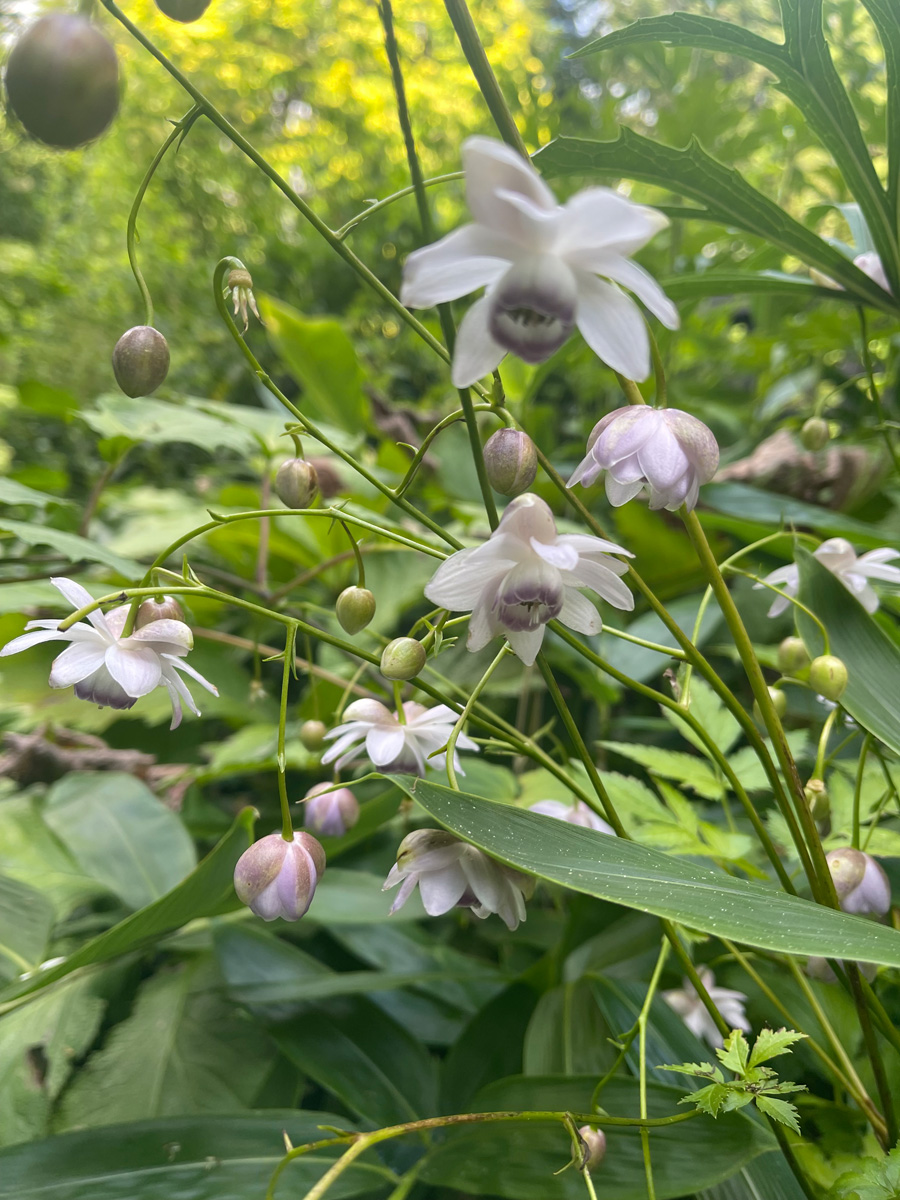
False anemone
Anemonopsis macrophylla, Zones 4–8
I really have no idea why we don’t see false anemone more often at garden centers, but I’m glad that this charmer is beginning to be discovered by more gardeners. While the foliage in spring and summer looks similar to that of astilbes, what sets this perennial apart is that it stops traffic in late summer and fall when it blooms—and believe me, the blooms look like nothing else in the garden.
While its common name suggests that the flowers look like anemones (Anemone spp. and cvs., Zones 4–8), to which they are related, I think they look more like tiny, upside-down, dangling daffodils (Narcissus spp. and cvs., Zones 3–9) that are lavender and a bit waxy in texture.
Graceful and elegant, a false anemone in bloom adds interesting structure to the late summer garden. Towering above its neighbors, it has stems that can reach 3 feet tall, but it may lean onto nearby plants if not carefully staked with thin bamboo canes. Each wiry stem produces many dangling waxy flowers and round, marble-like buds. The overall effect is like a candelabra.
A colony of false anemone can be achieved within a few years with careful division each spring, as the plant slowly increases in size. This behavior is a good thing, as false anemone is a plant that really impresses when it is planted in drifts. Quite carefree (it has few if any pests), this perennial is definitely worth seeking out. It tolerates partial to full shade.
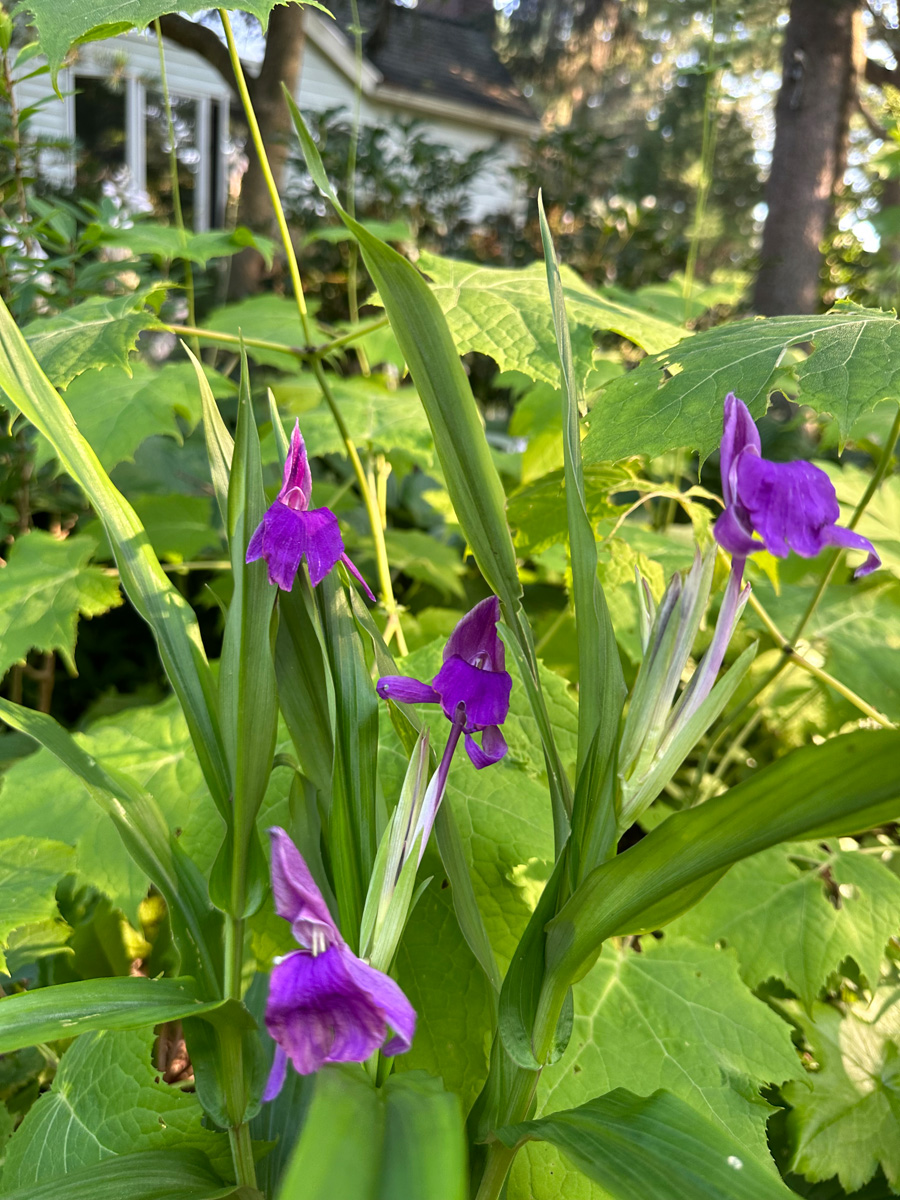
Hardy ginger
Roscoea tibetica, Zones 5–9
My eyes first fell on this hardy ginger growing in a garden in suburban Toronto, and while I was assured that it was hardy there, I doubted that it would live in my Massachusetts garden. Although it looks more tropical than anything that could be remotely hardy, I have since learned how hardy this gem is, and I’ve been surprised at how resilient most Roscoea selections have been for me just outside of Boston.
Hardy ginger is best grown in partial shade and has rose or purple flowers. There is another species, Roscoea cautleyoides (Zones 6–8), that has pale yellow flowers but is only hardy to Zone 6. Multiple flowers are formed on each stalk, which slowly open over a few weeks, beginning in early July and persisting through August. I guarantee garden visitors will not believe their eyes, and I leave it up to you to taunt them about zone envy and your secret talents about keeping this ginger relative alive, despite how easy it is to grow.
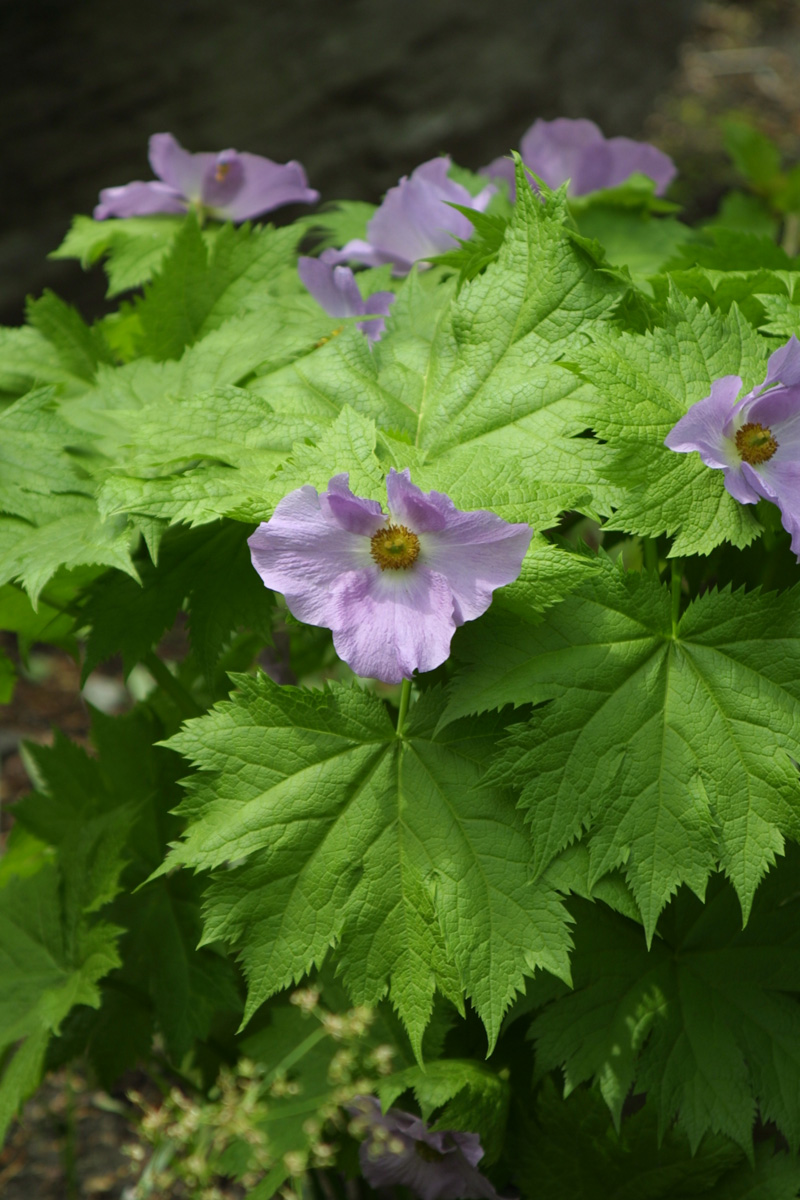
Japanese wood poppy
Glaucidium palmatum, Zones 4–7
Japanese wood poppy can be somewhat hard to find, pricey, and difficult to propagate, but once you get one into the ground of your shade garden, you’ll be rewarded with a show that will get better and better with each year. This perennial is easy to grow and long-lived. Once you see the large flowers and how they can last up to three weeks in a nice cool spring (this plant suffers in heat), you’ll agree that Japanese wood poppy is a winner all the way around. This plant will spread slowly via rhizomes to form a nice clump over time. It will grow about 1 to 3 feet tall and wide and prefers partial shade.
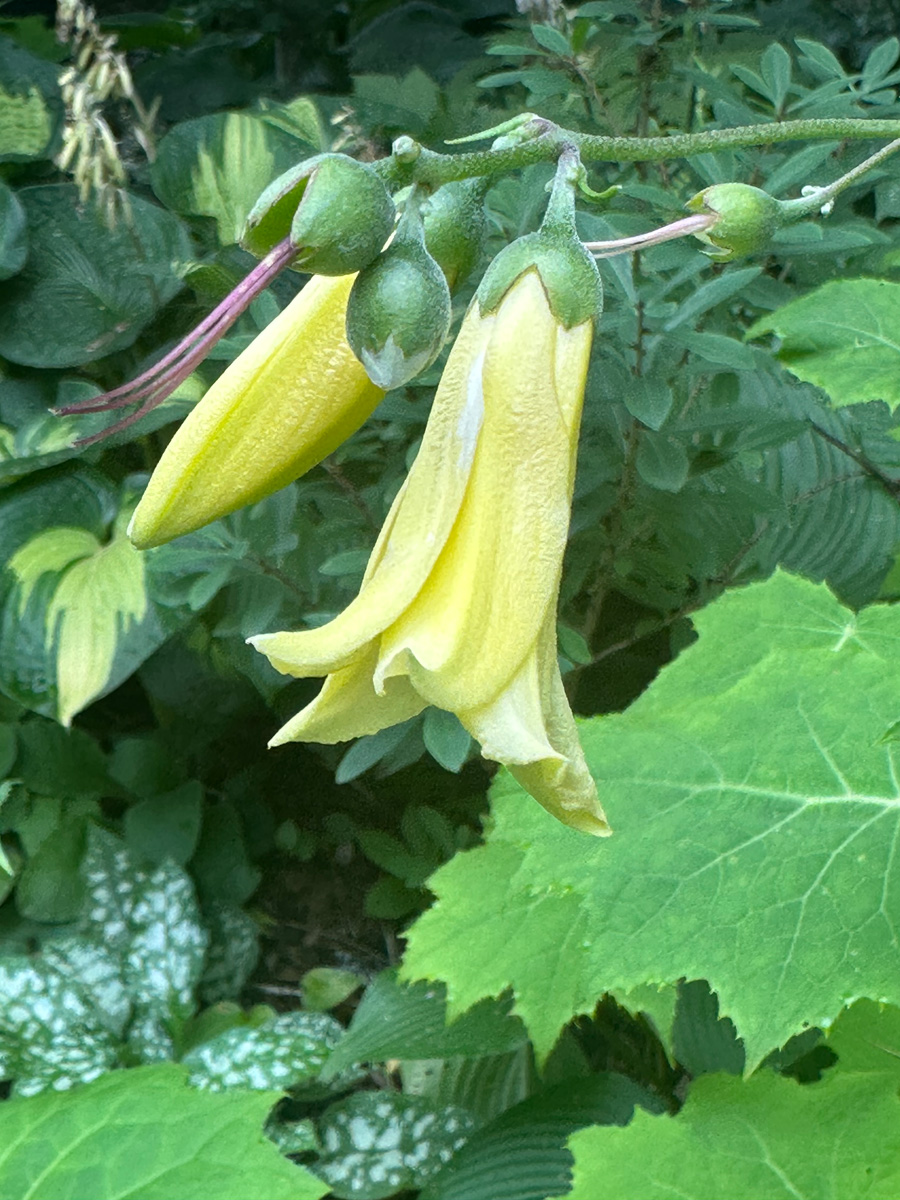
Yellow wax bells
Kirengeshoma palmata, Zones 5–8
Becoming easier and easier to find, Kirengeshoma is a genus of two species, both of which are equally lovely in the late summer garden. Catalog photos may suggest that the golden yellow waxy bells held on tall stems that tower to 4 feet might be another one of those unrealistic—lucky if you’ll ever see it—promises you sometimes find in the plant world, but I’m thrilled to be able to say that this is a plant that delivers on its promise in a big way.
Yellow wax bells and the related Korean wax bells (Kirengeshoma koreana, Zones 5–8) both deliver a show from spring through autumn. The bold foliage alone is impressive, lush, and almost tropical-looking. Despite its large and shrubby appearance, yellow wax bells dies back to the ground every winter. The small flowers emerge at the end of tall stems in late August through September. Behaving well with other woodlanders, it closes out the season with flair and elegance, blooming effortlessly until frost takes it down in October.
One of these unique and less commonly seen perennials may be just what your shade garden is missing to push it over the edge and set it apart from your neighbors’. For more flowering perennials for shade, check out:
And for more Northeast regional reports, click here.
Matt Mattus is the author of two books: Mastering the Art of Flower Gardening and Mastering the Art of Vegetable Gardening. He gardens in Worcester, Massachusetts.
Photos, unless otherwise noted: Matt Mattus
Fine Gardening Recommended Products

Gilmour 811673-1001 Sprinkler
Fine Gardening receives a commission for items purchased through links on this site, including Amazon Associates and other affiliate advertising programs.
- Adjustable collar for partial- to full-circle coverage
- Dial precisely sets spray distance
- On/off switch eliminates trips from sprinkler to spigot
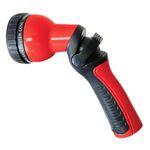
Dramm Revolution Adjustable 9-Pattern Metal Hose Nozzle
Fine Gardening receives a commission for items purchased through links on this site, including Amazon Associates and other affiliate advertising programs.
- Ergonomic insulated grip
- Maximum pressure of 90 PSI
- Fully adjustable spray pattern
- No trigger lock

Organo Republic 16 Perennial Wildflower Seeds Mix for Indoor & Outdoors
Fine Gardening receives a commission for items purchased through links on this site, including Amazon Associates and other affiliate advertising programs.




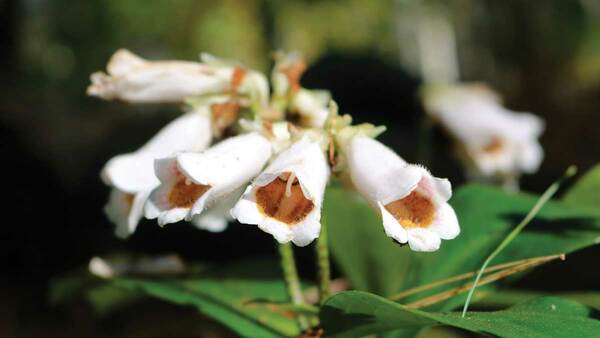
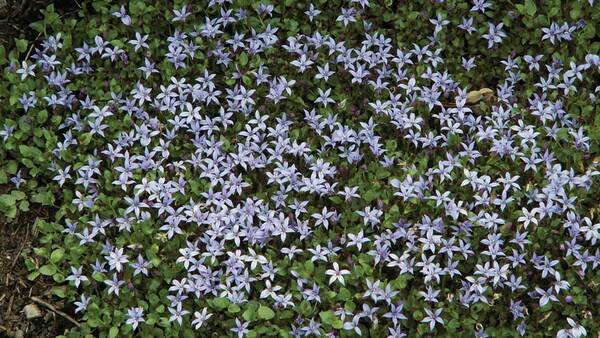













Comments
Log in or create an account to post a comment.
Sign up Log in